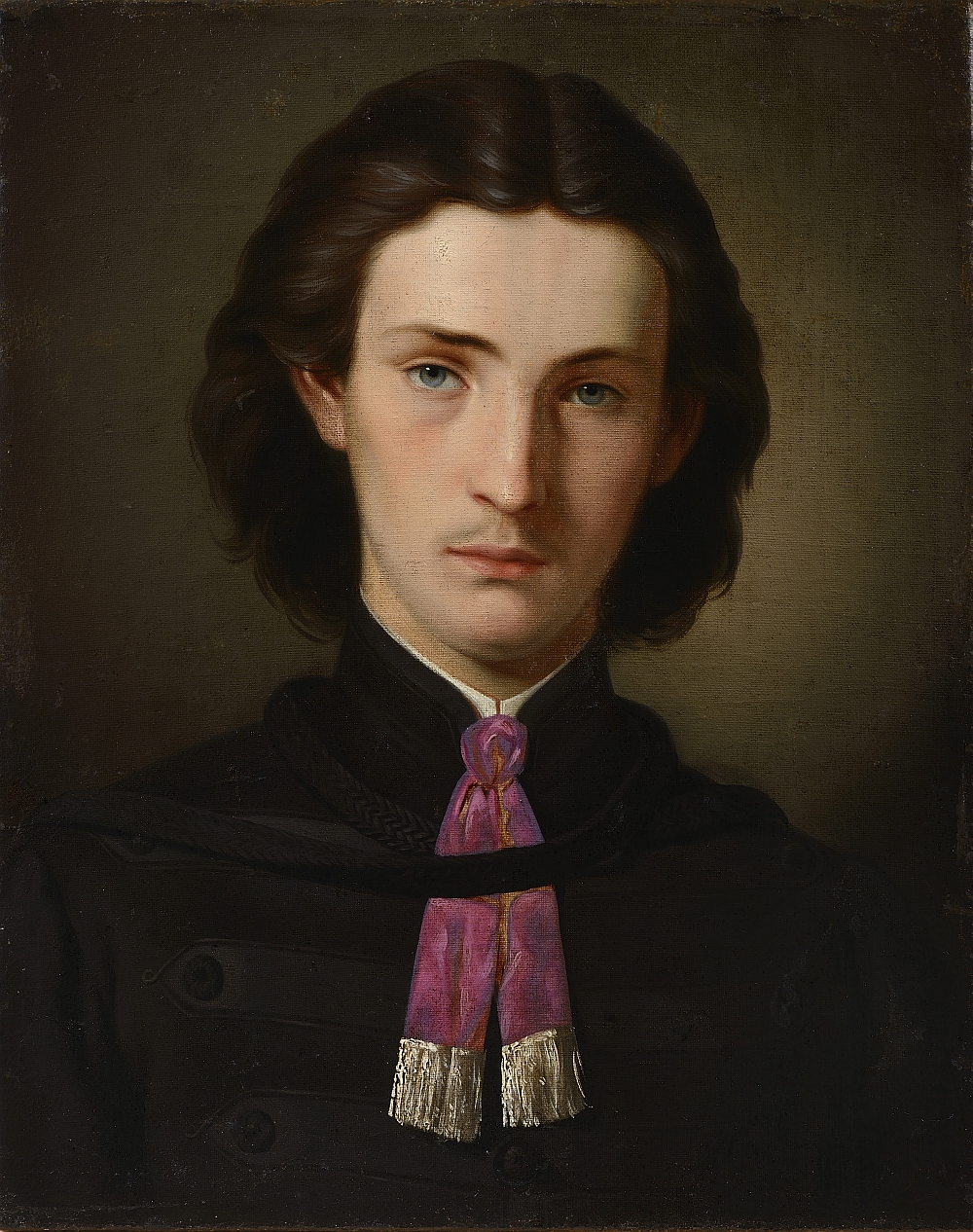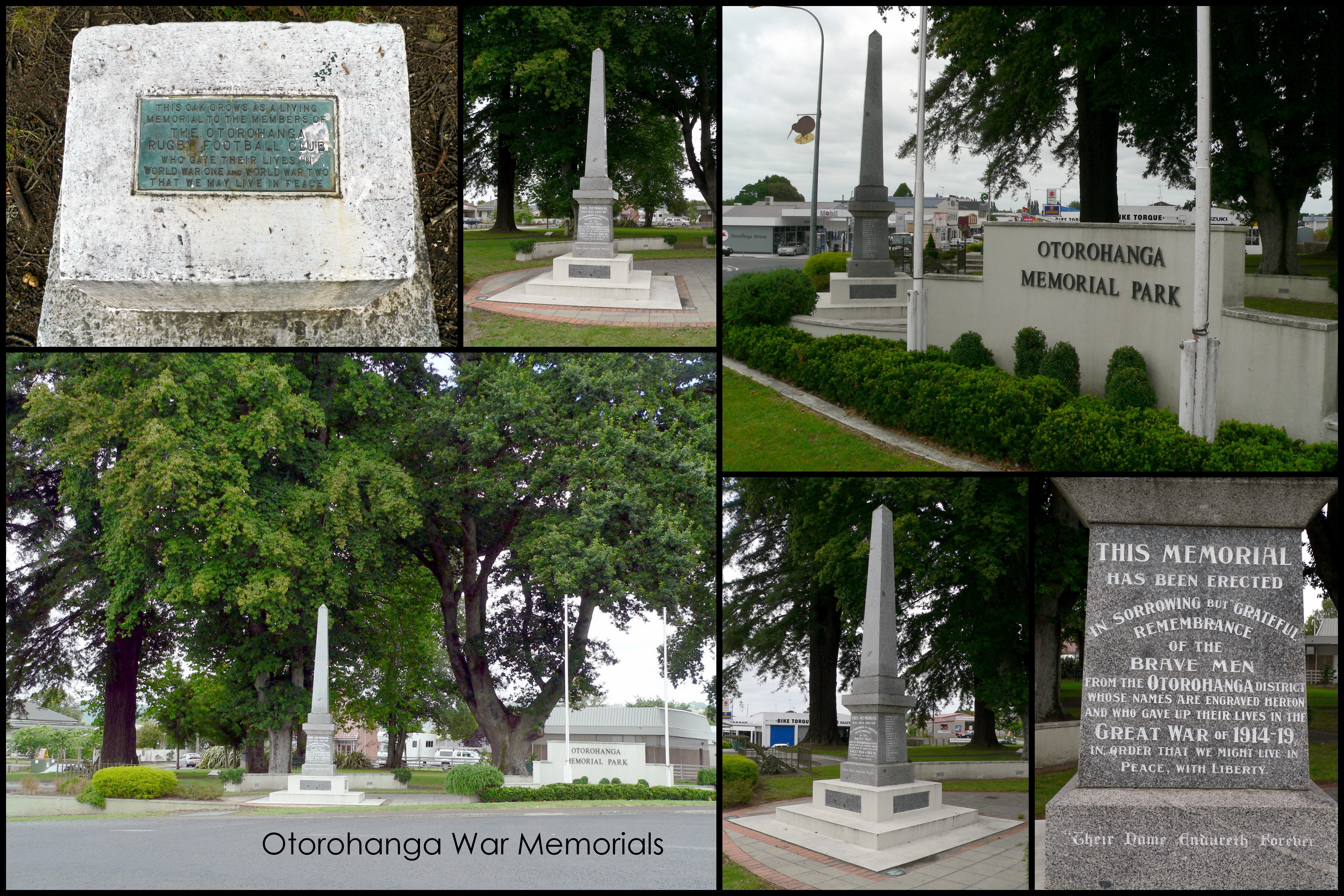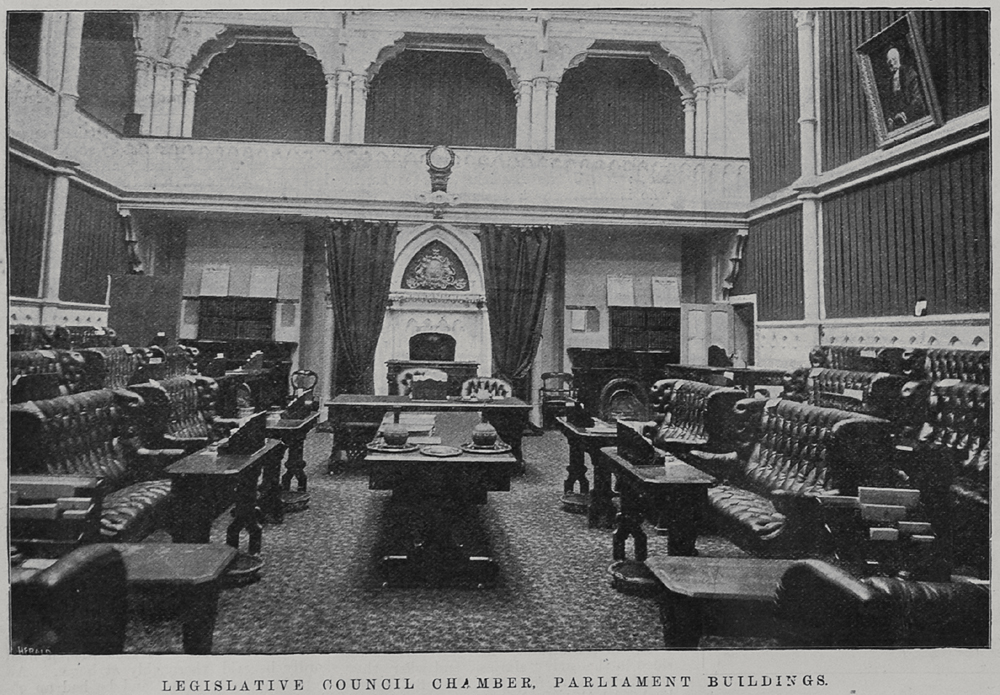|
Wahanui
Te Wahanui Reihana Te Huatare (also Te Reihana Whakahoehoe; died 5 December 1897) was a diplomat and leader of the Ngāti Maniapoto iwi. Wahanui was born probably in the late 1820s. His father was Te Ngohi-te-arau, also known as Te Huatare, of Ngāti Maniapoto. His mother was Tarati, who belonged to Ngāti Waiora of Mokau and came from the Piopio area. Wahanui was raised in the Waipā Valley as a Christian, and attended the Wesleyan Native Institution at Three Kings College in Auckland, afterwards returning to Te Kopua to live with his people. In the late 1850s Wahanui organised a mail service between Te Awamutu and Napier, and set up a tribal administration and law enforcement system which attracted the positive attention of John Gorst. He also participated in debates around the setting up of the Māori King Movement. left, Wahanui's wife, Te Wairingiringi, by Kate Sperrey, 1930s. Wahanui became increasingly opposed to Pākehā institutions and government, and fought at P ... [...More Info...] [...Related Items...] OR: [Wikipedia] [Google] [Baidu] |
Defence Of Pukekohe East 1863
The Defence of Pukekohe East was an action during the Invasion of the Waikato, part of the New Zealand Wars. On 13 September and 14 September 1863, 11 settlers and 6 militia men inside a half completed stockade around the Pukekohe East church held off a Māori taua or war party of approximately 200 men from Ngāti Maniapoto and Ngāti Pou iwi, until they were relieved by detachments of the 18th, 65th and 70th Regiments. In a series of actions around the stockade the taua sustained 20% casualties and retreated. Background Many Europeans settled in New Zealand between 1830 and 1860, by which time British approximately equaled the Maori. Europeans were generally welcomed by the Māori. However disputes over land, sovereignty and mana lead to skirmishes between Europeans and pro and anti European Maori, known as the New Zealand Wars, notably in the north in the 1840s, in Taranaki from 1860 and in the Waikato in 1863. In the Waikato, south of the British settlement at Auckland, Mā ... [...More Info...] [...Related Items...] OR: [Wikipedia] [Google] [Baidu] |
Ngāti Maniapoto
Ngāti Maniapoto is an iwi (tribe) based in the Waikato-Waitomo region of New Zealand's North Island. It is part of the Tainui confederation, the members of which trace their whakapapa (genealogy) back to people who arrived in New Zealand on the waka (canoe) Tainui. The 2006 New Zealand census shows the iwi to have a membership of 33,627, making it the 7th biggest iwi in New Zealand. History Ngāti Maniapoto trace their lineage to their eponymous ancestor Maniapoto, an 11th generation descendant of the people who arrived on the ''Tainui'' waka and settled at the Kawhia Harbour. His father Rereahu led the Tainui expansion to the interior of the Waikato region, and Maniapoto settled in the southern Waikato area. Maniapoto's older brother Te Ihinga-a-rangi settled at Maungatautari, forming the Ngāti Hauā and Ngāti Korokī Kahukura iwi. Hapū and marae There are many marae (area in front of a wharenui) in the Ngāti Maniapoto area, one of the notable ones being Te Tokanga Nui ... [...More Info...] [...Related Items...] OR: [Wikipedia] [Google] [Baidu] |
North Island Main Trunk
The North Island Main Trunk (NIMT) is the main railway line in the North Island of New Zealand, connecting the capital city Wellington with the country's largest city, Auckland. The line is long, built to the New Zealand rail gauge of and serves the large cities of Palmerston North and Hamilton. Most of the NIMT is single track with frequent passing loops, but has double track - * between Wellington and Waikanae, except for of single-track through tunnels between North Junction ( from Wellington) and South Junction, ( from Wellington), on the Pukerua Bay to Paekakariki section, * between Hamilton and Te Kauwhata (except for the single-track Waikato River Bridge at Ngāruawāhia), and * between Meremere and Auckland Britomart. Around (approximately 65%) of the line is electrified in three separate sections: one section at 1600 V DC between Wellington and Waikanae, and two sections at 25 kV AC: between Palmerston North and Te Rapa (Hamilton) and between Papakura and ... [...More Info...] [...Related Items...] OR: [Wikipedia] [Google] [Baidu] |
King Country
The King Country (Māori: ''Te Rohe Pōtae'' or ''Rohe Pōtae o Maniapoto'') is a region of the western North Island of New Zealand. It extends approximately from the Kawhia Harbour and the town of Otorohanga in the north to the upper reaches of the Whanganui River in the south, and from the Hauhungaroa and Rangitoto Ranges in the east to near the Tasman Sea in the west. It comprises hill country, large parts of which are forested. The region, albeit loosely defined, is very significant in New Zealand's history. The term "King Country" dates from the New Zealand Wars of the 1860s, when colonial forces invaded the Waikato and forces of the Māori King Movement withdrew south of what was called the ''aukati'', or boundary, a line of '' pa'' alongside the Puniu River near Kihikihi. Land behind the ''aukati'' remained native territory, with Europeans warned they crossed it under threat of death. Known for its rugged, rural roads and diverse landscape, the King Country has a warm cl ... [...More Info...] [...Related Items...] OR: [Wikipedia] [Google] [Baidu] |
Taonui Hikaka
Taonui Hikaka (died 2 December 1892) was an Ariki and Rangatira Chief of the Ngāti Maniapoto iwi in New Zealand. He was born in Paripari, King Country, in the early 1840s. After his father Taonui (I) who was one of the 500 chiefs that signed Te Tiriti o Waitangi 1840 died in the 1860s Taonui (II) became the leader of Ngāti Rora, a hapū of Ngati Maniapoto. Along with two older men, Wahanui and Rewi Maniapoto Rewi Manga Maniapoto (1807–1894) was a Ngāti Maniapoto chief who led Kīngitanga forces during the New Zealand government Invasion of Waikato during the New Zealand Wars. Kinship Rewi, or Manga as he was known to his kin, was the child of ..., Taonui was a leading chief of Ngati Maniapoto and represented the tribe in dealings with government bodies. References 1892 deaths Ngāti Maniapoto people Year of birth missing {{Māori-bio-stub ... [...More Info...] [...Related Items...] OR: [Wikipedia] [Google] [Baidu] |
Gottfried Lindauer
Gottfried Lindauer (5 January 1839 – 13 June 1926) was a Bohemian and New Zealand artist famous for his portraits, including many of Māori people. Czech life and Austrian school He was born Bohumír Lindauer in Plzeň (Pilsen), Western Bohemia, Austrian Empire (now part of the Czech Republic). His father, Ignatz Lindauer was a gardener. His first drawing experience was plants and trees. From 1855 Lindauer studied at the Academy of Fine Arts in Vienna, where he took classes of Leopold Kupelwieser, Josef Führich and Professor Rohl. To increase his chances on the market, he decided to change his name from the Czech Bohumír to the German translation of his name, "Gottfried". From his studio in Pilsen he created paintings with religious themes for churches and painting frescoes in the Cathedral churches of Austria. His paintings attracted people, particularly the prominent people who were often the subjects of his paintings, including Bishop Jieschek, of Budweis, in Bohemia. ... [...More Info...] [...Related Items...] OR: [Wikipedia] [Google] [Baidu] |
Waikato (iwi)
Waikato Tainui, Waikato or Tainui is a group of Māori ''iwi'' based in Waikato Region, in the western central region of New Zealand's North Island. It is part of the larger Tainui confederation of Polynesian settlers who arrived to New Zealand on the Tainui ''waka'' (migration canoe). The tribe is named after the Waikato River, which plays a large part in its history and culture. Pōtatau Te Wherowhero, the first Māori king, was a member of the Waikato hapu (sub-tribe) of Ngāti Mahuta, and his descendants have succeeded him. The king movement is based at Tūrangawaewae ''marae'' (meeting place) in Ngāruawāhia. The Waikato-Tainui iwi comprises 33 hapū (sub-tribes) and 65 marae (family groupings). There are over 52,000 tribal members who affiliate to Waikato-Tainui. Hamilton City is now the tribe's largest population centre, but Ngāruawāhia remains the tribe's historical centre and modern capital. In the 2006 census, 33,429 people in New Zealand indicated they were affilia ... [...More Info...] [...Related Items...] OR: [Wikipedia] [Google] [Baidu] |
1820s Births
Eighteen or 18 may refer to: * 18 (number), the natural number following 17 and preceding 19 * one of the years 18 BC, AD 18, 1918, 2018 Film, television and entertainment * ''18'' (film), a 1993 Taiwanese experimental film based on the short story ''God's Dice'' * ''Eighteen'' (film), a 2005 Canadian dramatic feature film * 18 (British Board of Film Classification), a film rating in the United Kingdom, also used in Ireland by the Irish Film Classification Office * 18 (''Dragon Ball''), a character in the ''Dragon Ball'' franchise * "Eighteen", a 2006 episode of the animated television series ''12 oz. Mouse'' Music Albums * ''18'' (Moby album), 2002 * ''18'' (Nana Kitade album), 2005 * '' 18...'', 2009 debut album by G.E.M. Songs * "18" (5 Seconds of Summer song), from their 2014 eponymous debut album * "18" (One Direction song), from their 2014 studio album ''Four'' * "18", by Anarbor from their 2013 studio album '' Burnout'' * "I'm Eighteen", by Alice Cooper commonl ... [...More Info...] [...Related Items...] OR: [Wikipedia] [Google] [Baidu] |
Auckland War Memorial Museum
The Auckland War Memorial Museum Tāmaki Paenga Hira (or simply the Auckland Museum) is one of New Zealand's most important museums and war memorials. Its collections concentrate on New Zealand history (and especially the history of the Auckland Region), natural history, and military history. The present museum building was constructed in the 1920s in the neo-classicist style, and sits on a grassed plinth (the remains of a dormant volcano) in the Auckland Domain, a large public park close to the Auckland CBD. Auckland Museum's collections and exhibits began in 1852. In 1867 Aucklanders formed a learned society – the Auckland Philosophical Society, later the Auckland Institute. Within a few years the society merged with the museum and '' Auckland Institute and Museum'' was the organisation's name until 1996. Auckland War Memorial Museum was the name of the new building opened in 1929, but since 1996 was more commonly used for the institution as well. From 1991 to 2003 the muse ... [...More Info...] [...Related Items...] OR: [Wikipedia] [Google] [Baidu] |
Ōtorohanga
Ōtorohanga is a north King Country town in the Waikato region in the North Island of New Zealand. It is located south of Hamilton and north of Te Kūiti, on the Waipā River. It is a service town for the surrounding dairy-farming district. It is recognised as the "gateway" to the Waitomo Caves and as the "Kiwiana Town" of New Zealand. Until 2007, Ōtorohanga held a yearly 'Kiwiana Festival.' History Early history Until the 1860s Ōtorohanga was a Ngāti Maniapoto village, with several whare (houses), peach trees and a flour mill. Huipūtea is a 300-year-old kahikatea tree, just to the south east of Ōtorohanga, which was the site of a skirmish in 1822 between Ngāti Maniapoto and Ngāpuhi. The village was abandoned after the invasion of the Waikato, except for Lewis Hettit's (or Hetet) farm. The area remained insecure, with Hettit's store being robbed by Te Kooti in 1869, but a meeting with Donald McLean later that year signalled moves towards peace. John William Ell ... [...More Info...] [...Related Items...] OR: [Wikipedia] [Google] [Baidu] |
Kawhia
Kawhia Harbour (Maori: ''Kāwhia'') is one of three large natural inlets in the Tasman Sea coast of the Waikato region of New Zealand's North Island. It is located to the south of Raglan Harbour, Ruapuke and Aotea Harbour, 40 kilometres southwest of Hamilton. Kawhia is part of the Ōtorohanga District Council and is in the King Country. It has a high-tide area of and a low-tide area of . Te Motu Island is located in the harbour. The settlement of Kawhia is located on the northern coast of the inlet, and was an important port in early colonial New Zealand. The area of Kawhia comprises and is the town block that was owned by the New Zealand Government. The government bought it from the Europeans in 1880 "not from the original Māori owners, but from a European who claimed ownership in payment of money owed by another European". History and culture Early history The Kawhia Harbour is the southernmost location where kauri trees historically grew. Kawhia is known in Māori ... [...More Info...] [...Related Items...] OR: [Wikipedia] [Google] [Baidu] |
New Zealand Legislative Council
The New Zealand Legislative Council was the upper house of the General Assembly of New Zealand between 1853 and 1951. An earlier arrangement of legislative councils for the colony and provinces existed from 1841 when New Zealand became a colony; it was reconstituted as the upper house of a bicameral legislature when New Zealand became self-governing in 1852, which came into effect in the following year. Unlike the elected lower house, the House of Representatives, the Legislative Council was wholly appointed by the governor-general. The New Zealand Constitution Act 1852 had authorised the appointment of a minimum of ten councillors. Beginning in the 1890s, the membership of the upper house became controlled by government of the day. As a result, the Legislative Council possessed little influence. While intended as a revising chamber, in practice, debates and votes typically simply replicated those in the lower house. It was abolished by an Act of Parliament in 1950, with ... [...More Info...] [...Related Items...] OR: [Wikipedia] [Google] [Baidu] |





